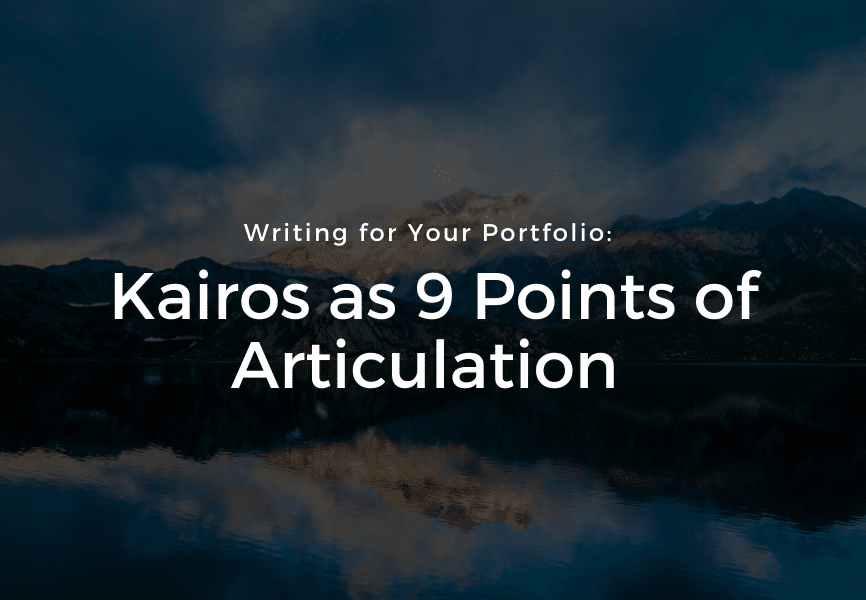Following our post on the STAR method for framing work samples for a professional audience, we would like to introduce you to another way you can contextualize your projects. This strategy is more expanded than STAR, and opens you up to more aspects of the rhetorical situation.
You might reflect on your projects in relation to the rhetorical concept of kairos and its nine points of articulation (as described by Sheridan, Ridolfo, and Michel in The Available Means of Persuasion: Mapping a Theory & Pedagogy of Public Rhetoric), which offers an expanded version of the traditional rhetorical triangle. This heuristic can be helpful to thinking through your general rhetorical strategy and your particular rhetorical choices that you made in your projects. It also shows how a rhetorical composition is not a single decision, but rather a complex series of interrelated decisions.
Rhetor: The primary rhetor(s) of the project.
Audience: The primary, secondary, and/or tertiary audiences of the project.
Exigency: The motivation and purpose of the project and how it meets the needs of its intended audiences.
Genres: The genre and its rhetorical conventions and purposes of the project.
Modes: The semiotic modes of the project (e.g., visual, aural, gestural, linguistic (alphabetic), spatial).
Media of production and delivery: The media required to compose and present the project (e.g., video and video-editing applications) and the way the project reaches the intended audiences.
Media of reproduction and distribution: The media required to get copies of the project to intended audiences.
Other compositions: Subsequent or complementary projects or deliverables that facilitate the rhetorical success of the primary project.
Collaborators: People beyond the rhetor who facilitate the rhetorical success of the project.
Try writing a critical commentary of one of your work samples, focusing on those “points of articulation” that showcase your particular achievements, competencies, experiences, or skills with this project.
Keep in mind the context in which your audience will be reading: Draw attention to the most important information so that they know not only what you have done but also why it matters to them.
